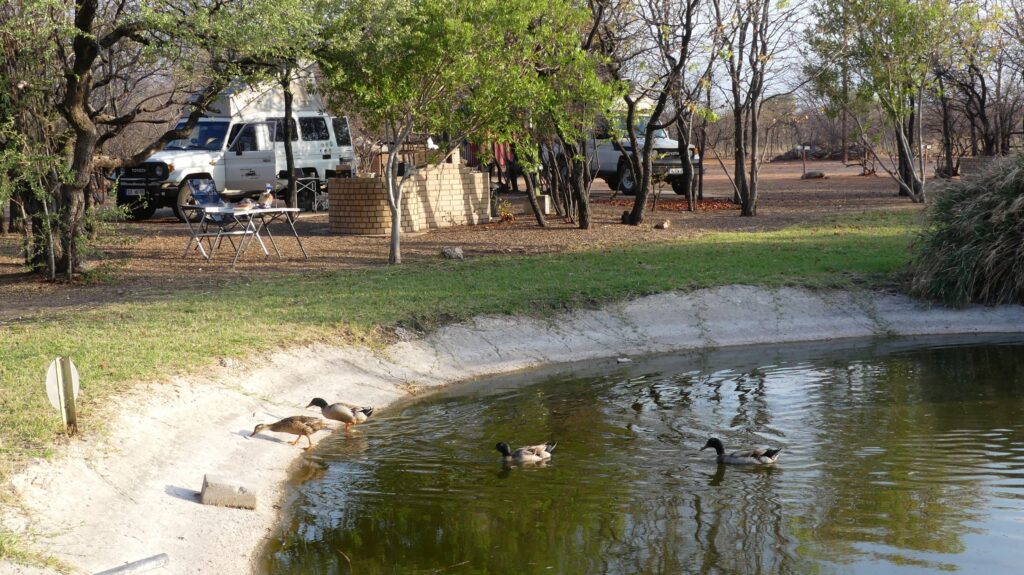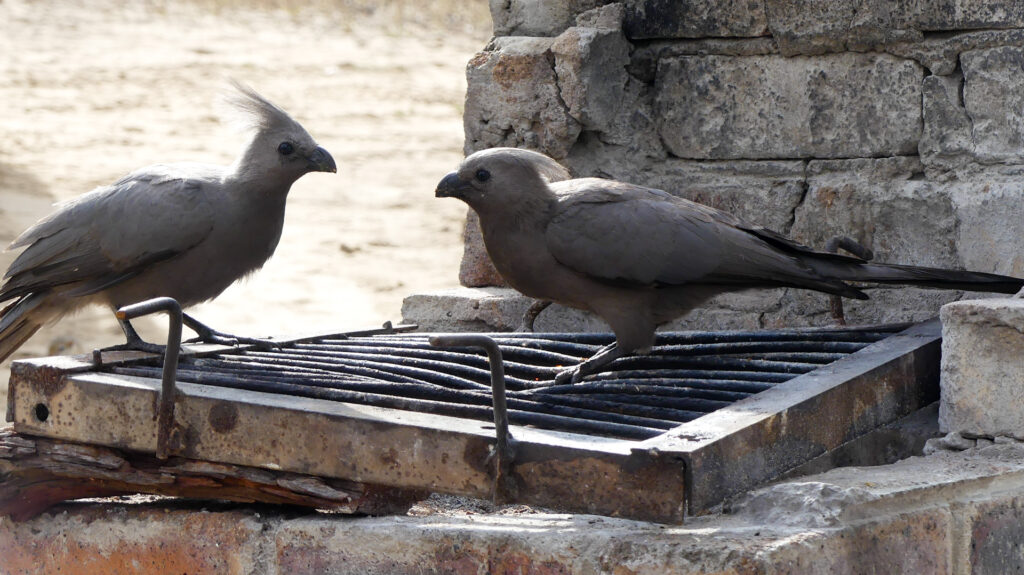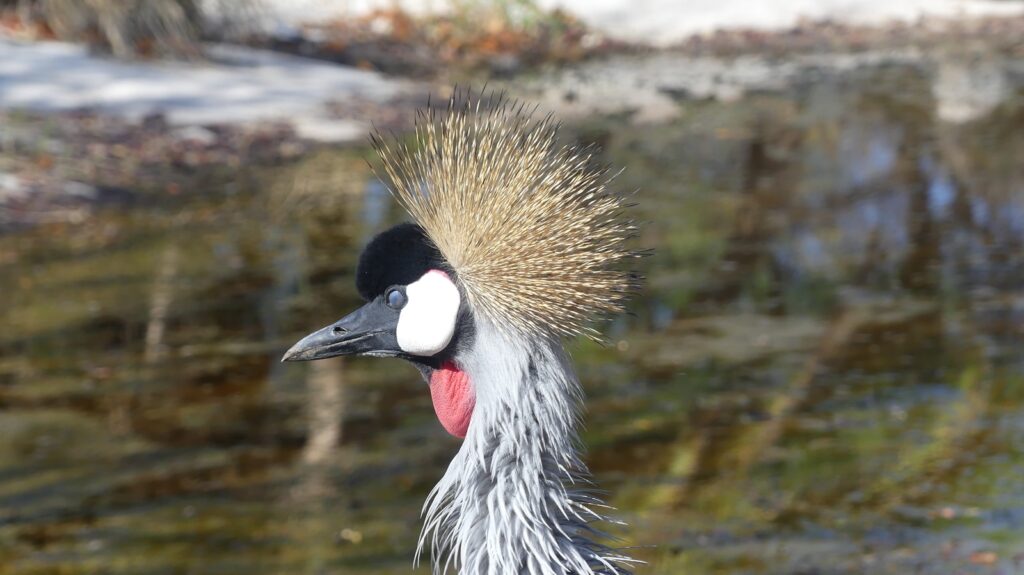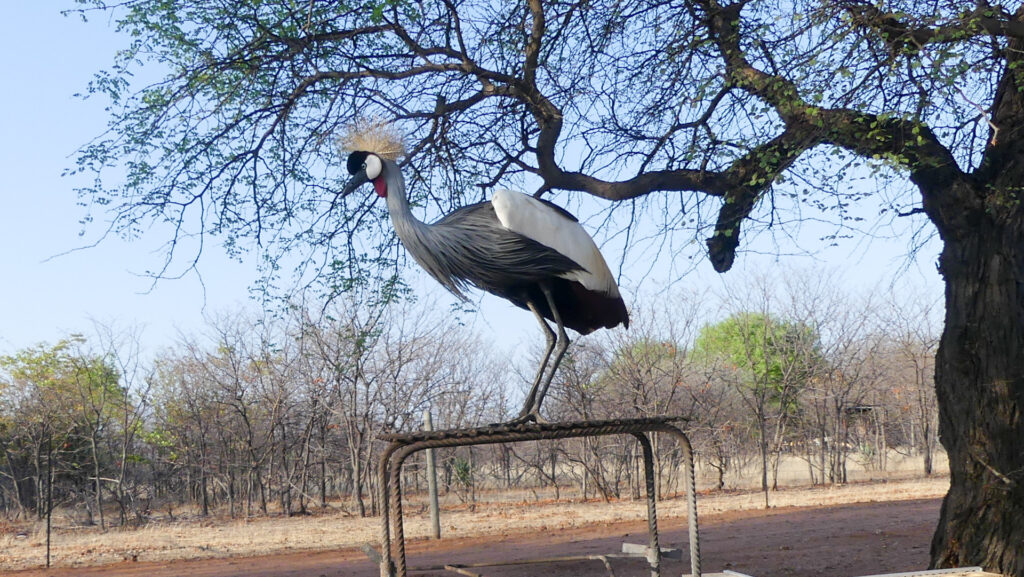Bevor wir die Salzpfannen in Angriff nehmen, übernachten wir auf einem malerischen Campingplatz mit Vogelbesatz zwischen den beiden Minenstädten Lethlakane und Orapa. Letztgenannte ist ein Staat im Staate. Die 10.000-Einwohner-Stadt ist streng abgeschirmt und die bestgehütete Stadt Afrikas. Zumindest kurzfristig bekommen wir leider keine Besuchsgenehmigung von Debswana, der De Beers Botswana Mining Corporation. Weshalb der Aufwand? Botswana ist heute der größte Diamantenproduzent der Welt. Als das Land 1966 in die Unabhängigkeit entlassen wurde, war Botswana arm wie eine Kirchenmaus, eines der 25 ärmsten Länder der Welt. Aber schon ein Jahr später wurden von De Beers in Orapa die ersten Diamanten gefunden. Für Botswana der Sechser im Lotto. Für die Briten, die das Land ein Jahr zu früh verlassen hatten, endete die Kolonialzeit damit wie ein Elfmeterschießen gegen Deutschland.
Auch heute noch werden die Diamanten von Debswana im Tagebau gefördert. Für jedes gewonnene Karat (0,2 Gramm) Rohdiamanten wird eine Tonne Erdreich durchgewaschen. Dank der Diamanten hat sich der 2,6 Millionen Einwohner zählende Staat wirtschaftlich erheblich entwickelt und zählt heute laut Weltbank zu den sieben afrikanischen Ländern mit einem höheren mittleren Einkommen. Doch der Motor der wirtschaftlichen Entwicklung beginnt zu stottern, seit die künstlichen Diamanten aus dem Labor auf den Markt kommen. So funkeln heute mehr als die Hälfte aller Verlobungsringe in den USA nur noch dank dieser Labordiamanten. Tragischerweise lebt auch deshalb ein Zehntel der Bevölkerung, laut Daten der Weltbank, unter der absoluten Armutsgrenze von zwei US-Dollar am Tag. Von De Beers haben wir den legendären Slogan „A Diamond is Forever“ gelernt, in Botswana erfahren wir, dass Diamanten (die echten!) zu mehr Schulen, einer kostenfreien Gesundheitsversorgung und weniger Armut geführt haben.




Before we embark on the majestic salt pans, we spend the night at a picturesque campsite, surrounded by a variety of colorful birds, between the two mining towns of Lethlakane and Orapa. The latter is truly a state within a state. This town, with its 10,000 inhabitants, is strictly sealed off and is considered the best-guarded city in Africa. Unfortunately, we do not receive a short-term permit to visit Debswana, the De Beers Botswana Mining Corporation. Why all the fuss? Botswana is today the largest diamond producer in the world. When the country gained independence in 1966, it was as poor as a church mouse and ranked among the 25 poorest countries in the world. However, just a year later, the first diamonds were discovered in Orapa by De Beers – a true jackpot for Botswana. For the British, who left the country a year too early, it was like a penalty shootout against Germany.
Even today, diamonds are mined by Debswana through open-pit mining. For every carat of rough diamonds extracted, a ton of earth is washed. Thanks to diamonds, this country of 2.6 million inhabitants has experienced significant economic development and is now classified by the World Bank as one of the seven African countries with a higher middle income. However, the engine of economic growth is beginning to sputter as lab-grown diamonds flood the market. Today, more than half of all engagement rings in the USA sparkle thanks to these lab diamonds. Tragically, a tenth of the population, according to World Bank data, still lives below the absolute poverty line of two US dollars a day. From De Beers, we learned the legendary slogan „A Diamond is Forever“; in Botswana, however, we discover that real diamonds have led to more schools, free healthcare, and less poverty.
Schreibe einen Kommentar zu Eva Antwort abbrechen